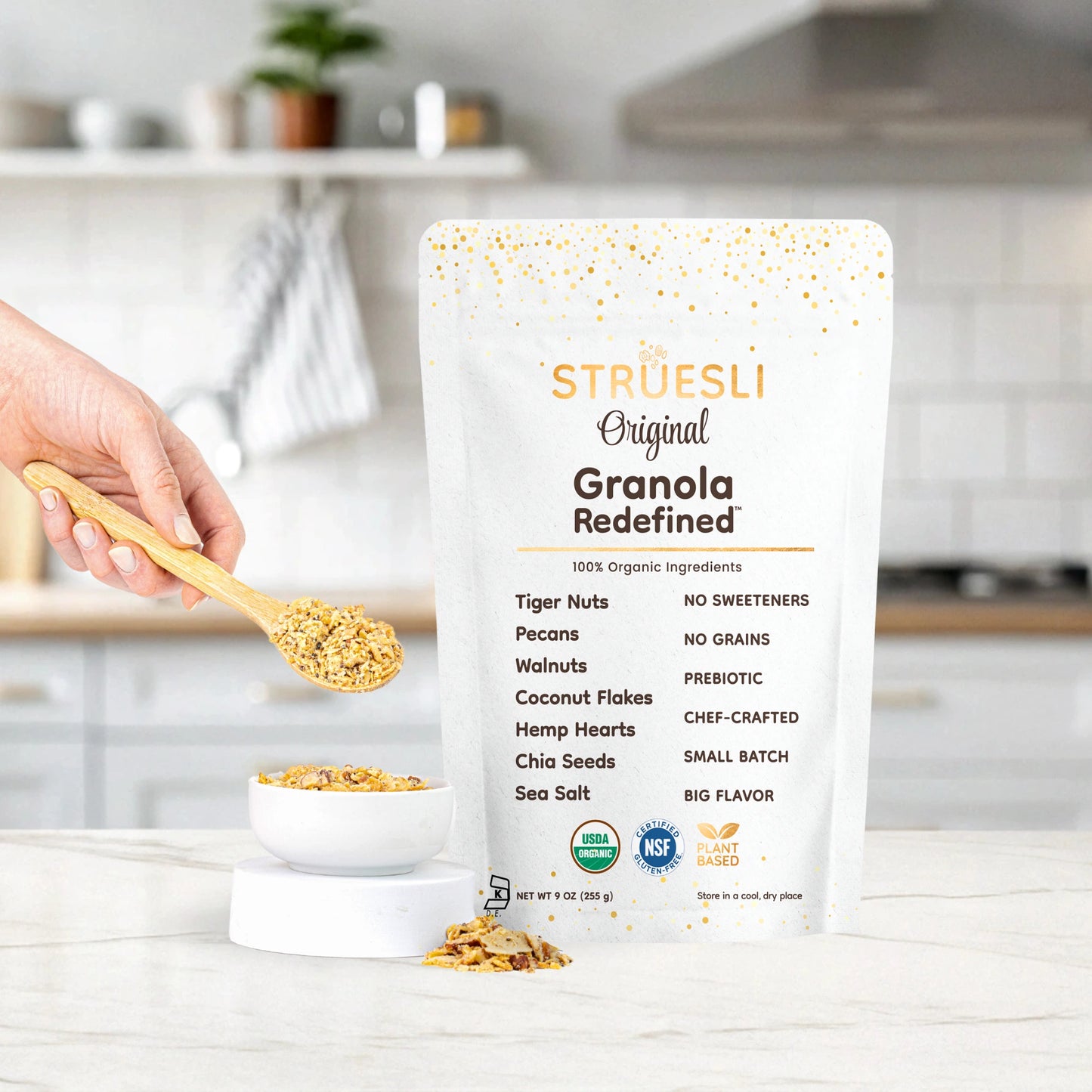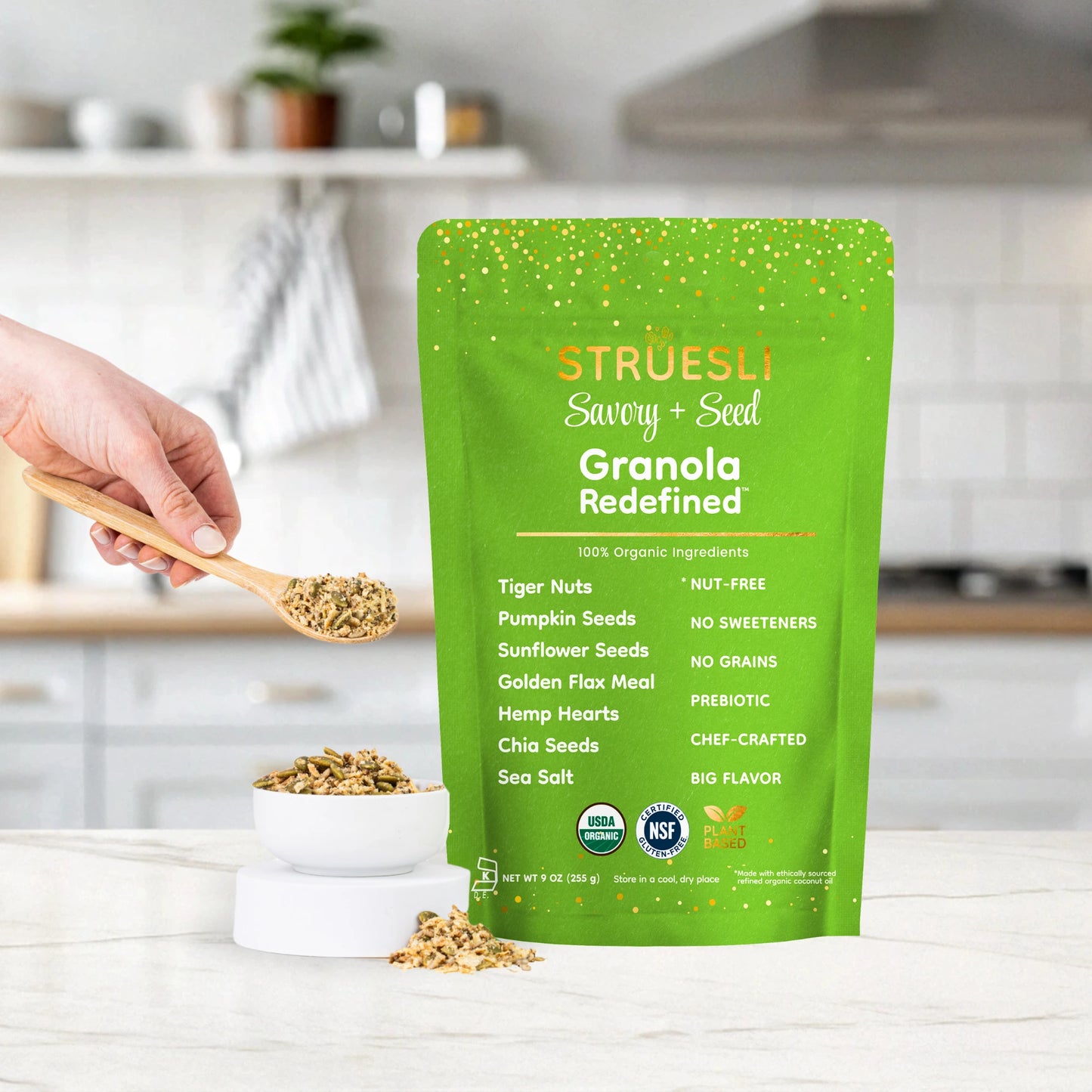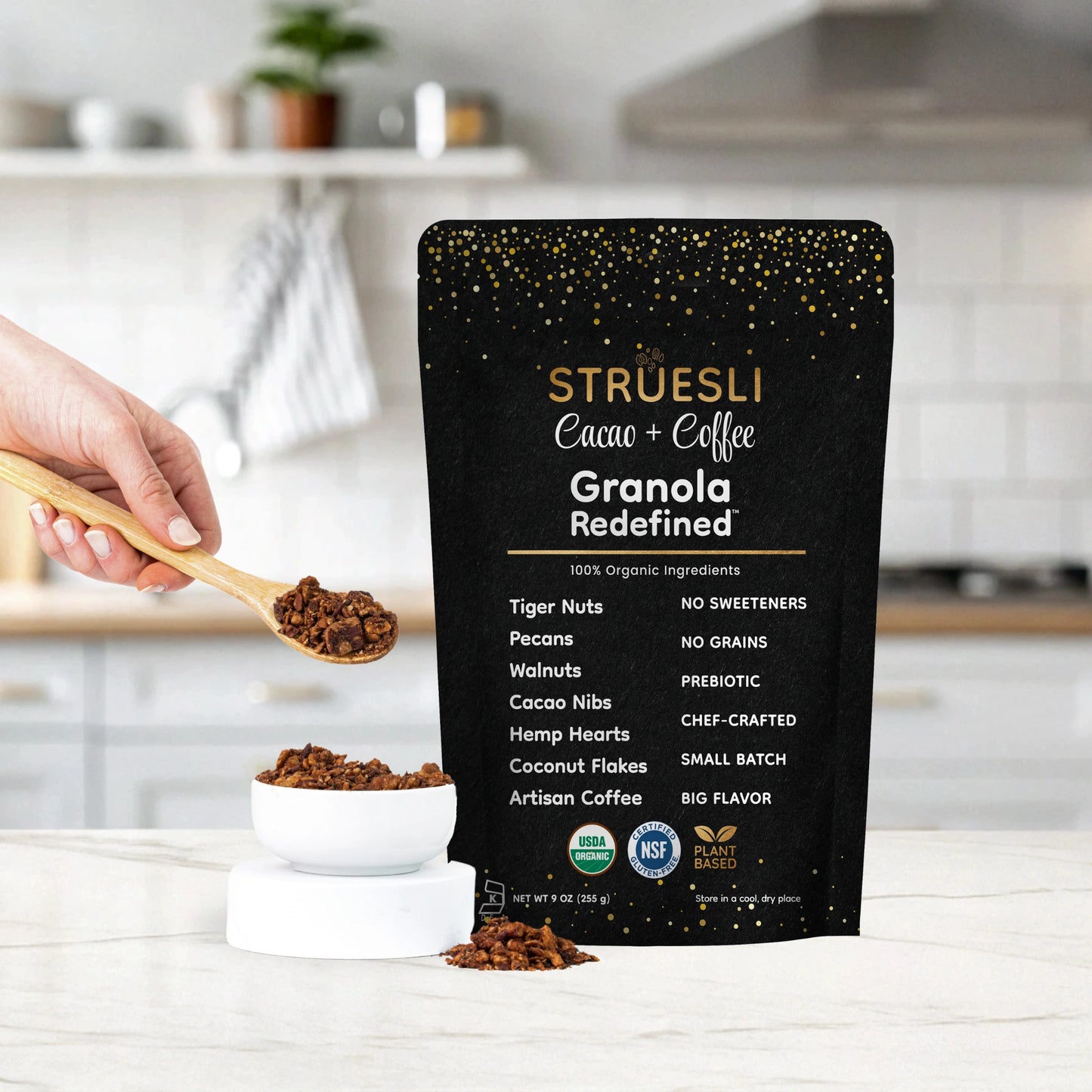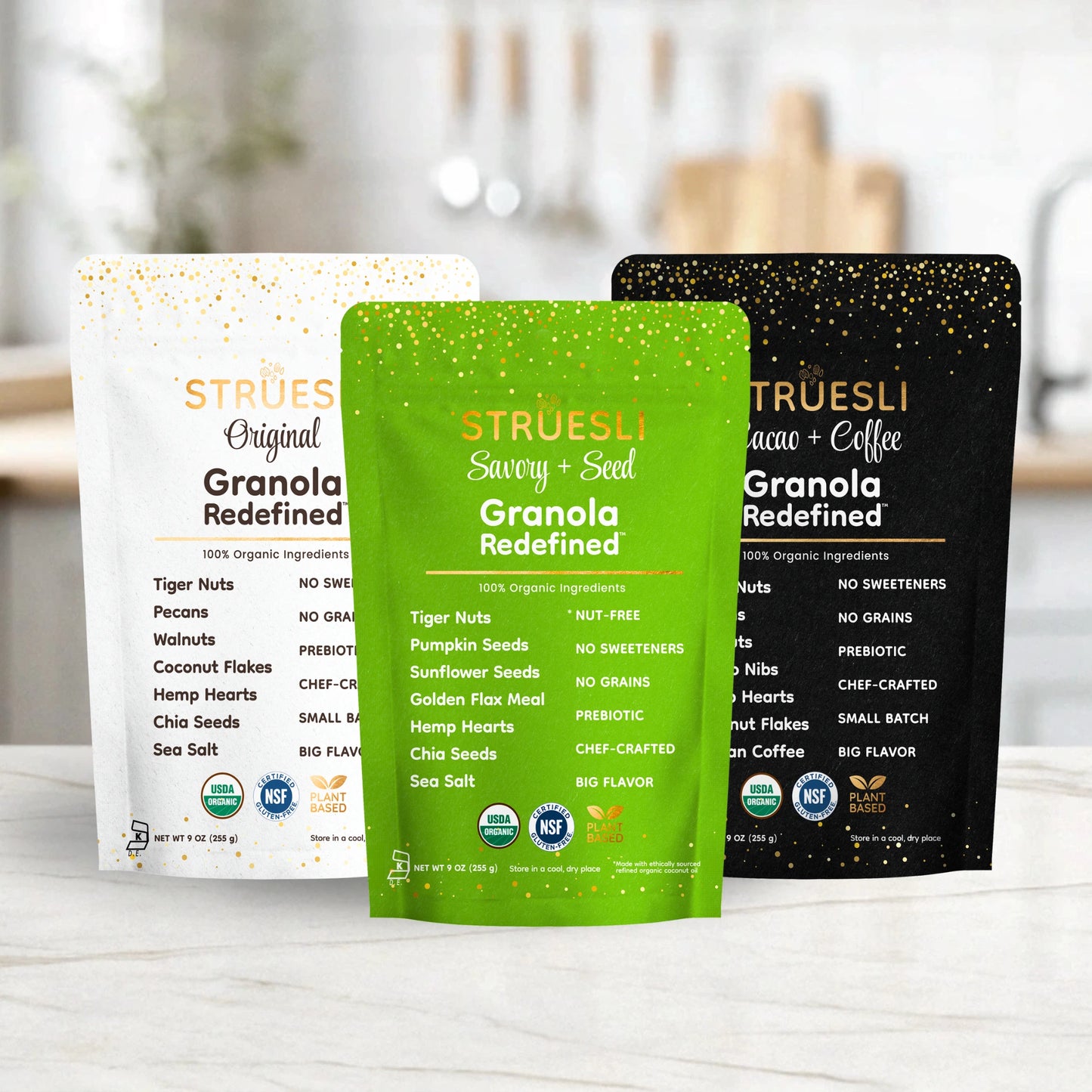
As a registered dietitian, it’s funny to me that “fibermaxxing” has become a social media trend. Because it’s really just about people eating a lot more fiber than they’re getting now … aka, meeting the recommended daily amount of 25 to 30 grams for most adults. But hey, if calling it “fibermaxing” is what gets people excited to eat fiber, then I’m all about it.
I’ll share what fibermaxxing is, how to do it well, and some fiber boosting food ideas that really do get people excited to eat more.
What Is Fiber Maxing?
Fibermaxxing (no matter how you spell it) means that at every eating opportunity in a day, you aim to get in more fiber than you usual would. For example, if breakfast is typically scrambled eggs and toast, you’d “fibermax it” by adding ½ cup of raspberries and smearing half of a mashed avocado over the toast, a pro move that would gain you about 8 more grams of fiber.
Fibermaxxing is not about aiming for a certain amount of fiber, but rather about finding natural ways to add fiber to meals, thus increasing your total daily intake of fiber.
The reason this trend is gaining popularity and the attention of dietitian-nutritionists like me is because fiber has so many wonderful benefits.
5 Important Benefits Of Fiber
- Better digestion, including more consistency with bathroom trips and less constipation
- Cardiovascular health, including lowered blood pressure, cholesterol, and triglycerides
- Weight management by feeling more satisfied from meals
- Supporting beneficial bacteria in the gut, known as the gut microbiome, to help keep you healthy and fight off disease
- Lowered risk of heart disease, type 2 diabetes, and some cancers, including a lower risk of colorectal cancer
High Fiber Foods That Help With Fibermaxxing
When selecting foods to add to your cart and meals to help with fibermaxxing, it’s a good idea to reach for plant-based foods. There are many types of fiber, and most plant-based foods contain several types of fiber, including soluble and insoluble fiber, as well as prebiotic fiber. You don’t need to aim for a certain amount of any certain type of fiber, but rather aim for adding a variety of these fiber-rich plant-based foods to meals.
- Beans: 10 grams per ½ cup
- Oats: 8 grams per 1 cup
- Berries: 3-4 grams per ½ cup
- Lentils: 8 grams per ½ cup
- Soybeans (edamame): 8 grams per ½ cup
- Avocado: 7 grams per ½ avocado
- Chia seeds: 7 grams per 2 tablespoons
- Chickpeas: 6 grams per ½ cup
- Quinoa: 5 grams per 1 cup
- Sweet potatoes: 5 grams per medium sweet potato
- Almonds: 5 grams per ¼ cup
- Apples: 5 grams per large apple
- Sliced tiger nuts: 5 grams per ¼ cup
- Ground flaxseeds: 4 grams per 2 tablespoons
- Corn: 4 grams per 1 cup kernels
- Carrots: 4 grams per 1 cup
- Beets: 4 grams per 1 cup
- Peanut butter: 4 grams per ¼ cup
- Brown rice: 3.5 grams per 1 cup
- Dried coconut: 3.5 grams per 1 cup
- Broccoli: 3 grams per 1 cup
- Brussels sprouts: 3 grams per 1 cup
- Dark chocolate or cacao: 3 grams per ounce
- Wild blueberries: 3 grams per ½ cup
- Bananas: 3 grams per medium banana
- Dried fruits (raisins, dried cranberries): 2-4 grams per ¼ cup
10 Easy Fiber Boosting Ideas
Fibermaxxing is all about looking for opportunities to add more fiber to meals because every gram adds up to better health. Here are some easy ways to boost fiber in meals.
- To a carton of yogurt, add ¼ cup of Struesli Grain-Free Granola (adds 5 grams of fiber)
- Top a salad with ¼ cup shelled edamame and ¼ cup corn kernels (adds 6 grams of fiber)
- Enjoy sliced apples with ¼ cup peanut butter and a sprinkle of dried coconut (add 5 grams of fiber)
- When making soup, stir in a can of beans (adds 6-10 grams of fiber per cup of soup)
- Roll a hard-cooked egg in a mix of sesame seeds, chia seeds, and flax (adds 2-3 grams of fiber)
- When making chicken salad or tuna salad, add ¼ cup chopped almonds (adds 5 grams fiber)
- To a bowl of oatmeal, stir in ¼ cup wild blueberries and 2 tablespoons nut butter (adds 5 grams of fiber)
- To a bowl of creamy soup, add ¼ cup of Struesli Grain-Free Granola (adds 5 grams of fiber)
- To a sheet pan chicken recipe, add diced carrots, Brussels sprouts, and sweet potato (adds 6 grams of fiber per cup of roasted veggies)
- To beef stew, stir in a can of cooked lentils (adds 6 grams of fiber per cup of stew)
Struesli Granola Has A Lot Of Fiber
Struesli is a light and crispy granola that’s made from fiber-rich ingredients, including tiger nuts, nuts, unsweetened coconut, chia seeds, and ground flaxseed. All of these nutritious whole-food ingredients come together to create a versatile, no-sugar-added granola that contributes fiber to anything it’s added to.
I enjoy fibermaxxing with Struesli by sprinkling it over top of both sweet and savory foods. Every ¼ cup of Struesli added to foods gives it a boost of 5 grams of fiber. Try adding Struesli to:
- Yogurt
- Cottage cheese
- Salads
- Creamy soups
- Nut butter toast
- Avocado toast
- Oatmeal and other hot or cold cereals
- Batter or topping for baked goods
See More Ways To Use Struesli
_____________________________________________________________
Written by Jessie Shafer, RDN, a registered dietitian and nutrition consultant for Struesli. Jessie is a former magazine editor and long-time journalist who loves to turn the science of nutrition into relatable tips that can inspire and improve health from the inside out.
Oct 16, 2025




